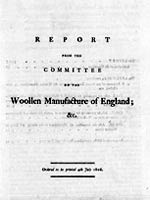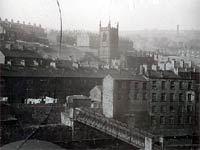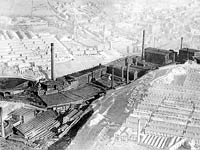Calderdale history timeline 1800 - 1810AD
The New Order
 The
predicament of the handloom weavers, experiencing the miseries of
change, became a national concern. As traditional sources of obtaining
credit disappeared and the routes to becoming a clothier steadily
faded away opportunities for social advancement decayed.
The
predicament of the handloom weavers, experiencing the miseries of
change, became a national concern. As traditional sources of obtaining
credit disappeared and the routes to becoming a clothier steadily
faded away opportunities for social advancement decayed.
Woollen workers believed their jobs were safeguarded by statutes dating from Tudor times and demanded that their livelihoods were entitled to protection by enforcement of the law. Factory masters argued that the old laws were archaic and an obstacle to the development of the industry.
Parliament appointed a Select Committee in 1803 and again in 1806 (see report image opposite, click for details) to investigate the issues. In 1809 the government repealed all existing legislation, the woollen trade was thrown open to the forces of the free market, the new order, the factory age had arrived.
 The
factory system was irresistible. The change from workshop to mill
proved to be more than just a turning point in the history of textile
production, it was a radical restructuring of the character, organisation
and meaning of work itself; it was a profound cultural transformation.
The
factory system was irresistible. The change from workshop to mill
proved to be more than just a turning point in the history of textile
production, it was a radical restructuring of the character, organisation
and meaning of work itself; it was a profound cultural transformation.
Throughout the nineteenth century the factory system and its methods of management would influence all sectors of the British economy. Combined with a new power source, the steam engine, it would be responsible for the rapid urbanisation of towns and cities leaving us a vast legacy in the creation of much of our built environment.
 For
those who experienced the consequences of the Industrial Revolution
this was not just an economic question concerning the relative merits
or efficiency of one form of organisation and technology over another,
it was also an important range of social and political issues which
found expression in the activities of Luddites and Chartists, and
ultimately provided the origins of our modern world.
For
those who experienced the consequences of the Industrial Revolution
this was not just an economic question concerning the relative merits
or efficiency of one form of organisation and technology over another,
it was also an important range of social and political issues which
found expression in the activities of Luddites and Chartists, and
ultimately provided the origins of our modern world.


